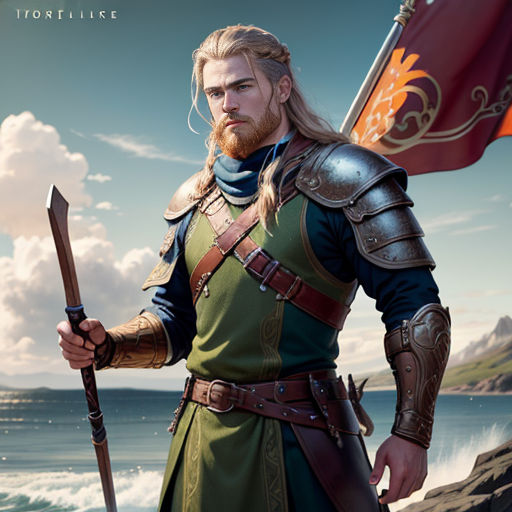
The Viking and the Cross
By Storybird

02 Oct, 2023

The Viking, Leif, set foot on the unfamiliar land, his eyes scanning the horizon. The sight before him was a settlement, unlike any he had seen before.

As he delved deeper into the settlement, he came across a small wooden structure, its interior filled with golden artifacts. Among them, a cross stood out to him.

Leif picked up the cross, examining it closely. It was beautifully crafted, the figure of a man nailed to it caught his attention.

Intrigued, Leif decided to take the cross back home. He secured it to his belt and left the settlement, setting sail for his homeland.

Upon returning, Leif was greeted by his wife, Astrid. Seeing the cross, she asked about its origin. He shared his findings, piquing her interest.

Astrid was intrigued by the cross and the man on it. She suggested they consult the village elder, Erik, to learn more about it.
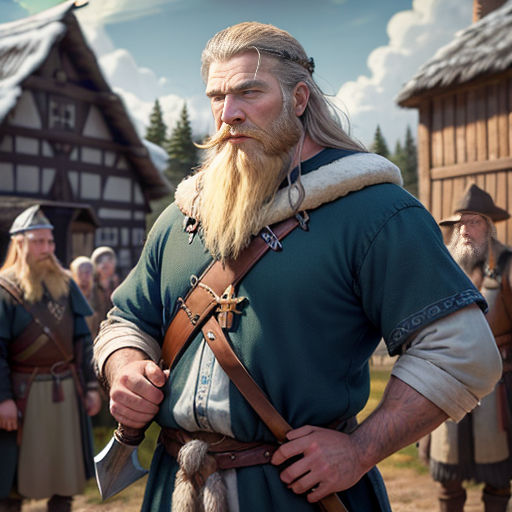
Erik, the village elder, was a wise man known for his knowledge of many cultures. Upon seeing the cross, he recognized it instantly.

"This is a symbol of Christianity," Erik informed, "It represents a man named Jesus Christ who they believe to be the son of their god."

Leif and Astrid listened intently as Erik spoke of Jesus Christ. He was a man of compassion, forgiveness, and love - concepts that were foreign yet fascinating to them.
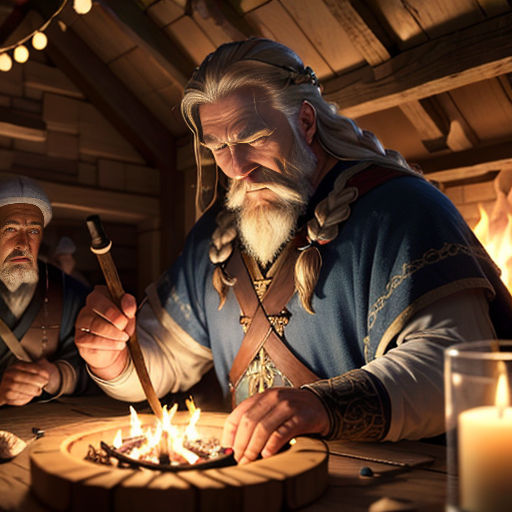
Leif decided to add Jesus Christ to the Norse pantheon, seeing him as a god of peace and love. The village, initially surprised, grew to accept this new deity.

A shrine was built for Jesus Christ in their village. The cross that Leif had brought back was placed in it, becoming a symbol of their newfound belief.
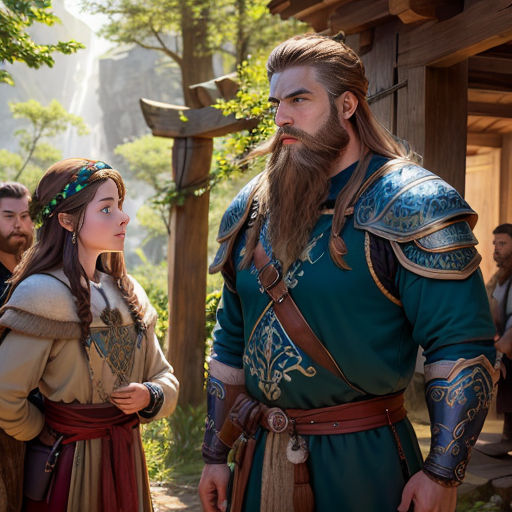
News of the new deity spread across other Viking villages. Some dismissed it as folly, while others were intrigued and wanted to learn more.

Leif, Astrid, and Erik became the primary teachers of this new belief, hosting gatherings where they shared stories of Jesus Christ and his teachings.

Over time, the teachings of Jesus Christ began to influence the Viking culture. Concepts of forgiveness and love started to permeate their warrior ethos.

Leif noticed a positive change in his people. They were less eager for needless battles, more willing to settle disputes peacefully, and showed compassion to one another.

Some Vikings resisted the change, clinging to their old ways. Despite the opposition, Leif, Astrid, and Erik remained steadfast in spreading their newfound faith.
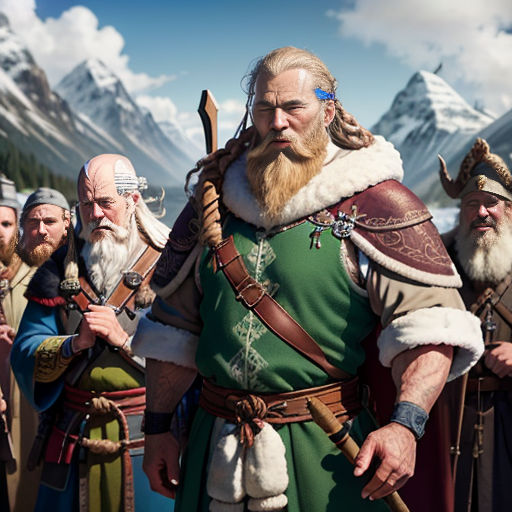
The trio traveled to other Viking settlements, sharing their discovery and the teachings of Jesus Christ. Many were receptive, adding the new deity to their pantheon.
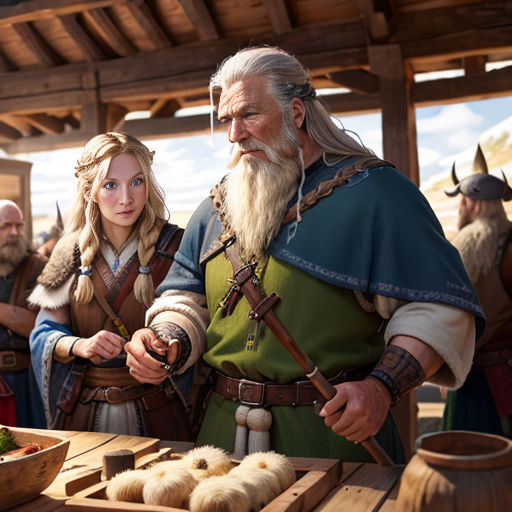
With each passing year, the influence of Jesus Christ in the Viking culture grew. The cross became a common sight in many Viking settlements.

Leif, now an old man, reflected on his life. The cross he discovered in his youth had brought about a significant change in his people's way of life.

He saw his people living in harmony, guided by the teachings of Jesus Christ. His heart filled with peace, knowing his discovery had made a difference.
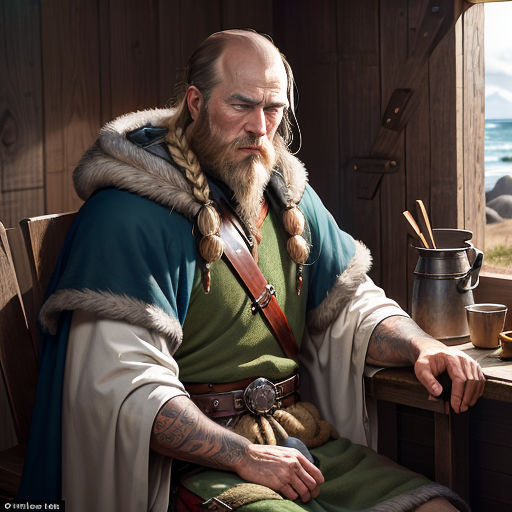
As he lay on his deathbed, Leif held the cross in his hand, a symbol of the enduring legacy he had left behind for his people.

Astrid and Erik stood by his side, promising to continue spreading the teachings of Jesus Christ and preserving the peace that had flourished in their land.
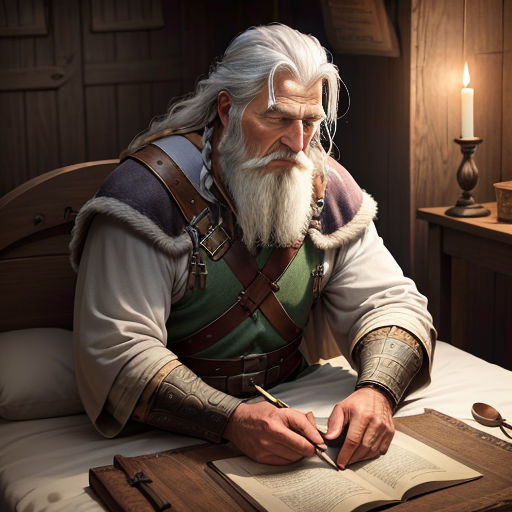
Leif passed away peacefully, his legacy living on in the hearts of his people. His story, the story of the Viking and the cross, became a legend among the Norse.
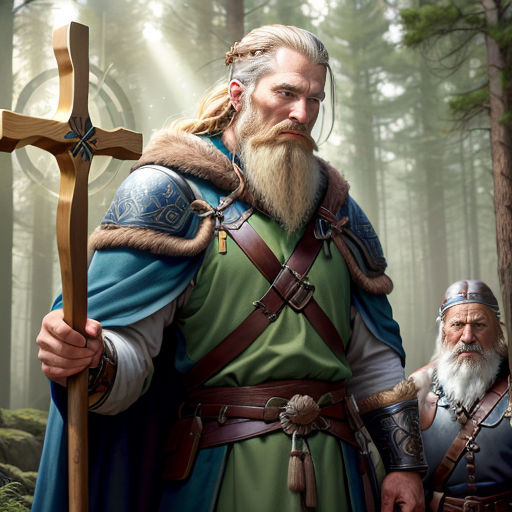
The cross still stands in the shrine, a testament to the Viking who dared to embrace a new deity, forever changing the spiritual landscape of his people.
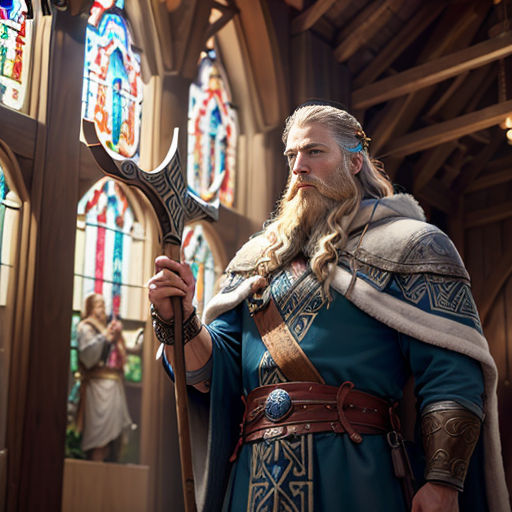
And so, in the pantheon of Norse gods, alongside Odin, Thor, and Freya, stands Jesus Christ, a symbol of love, compassion, and peace.